Cobra Aero reduced air-cooled cylinder weight by 50% with nTop
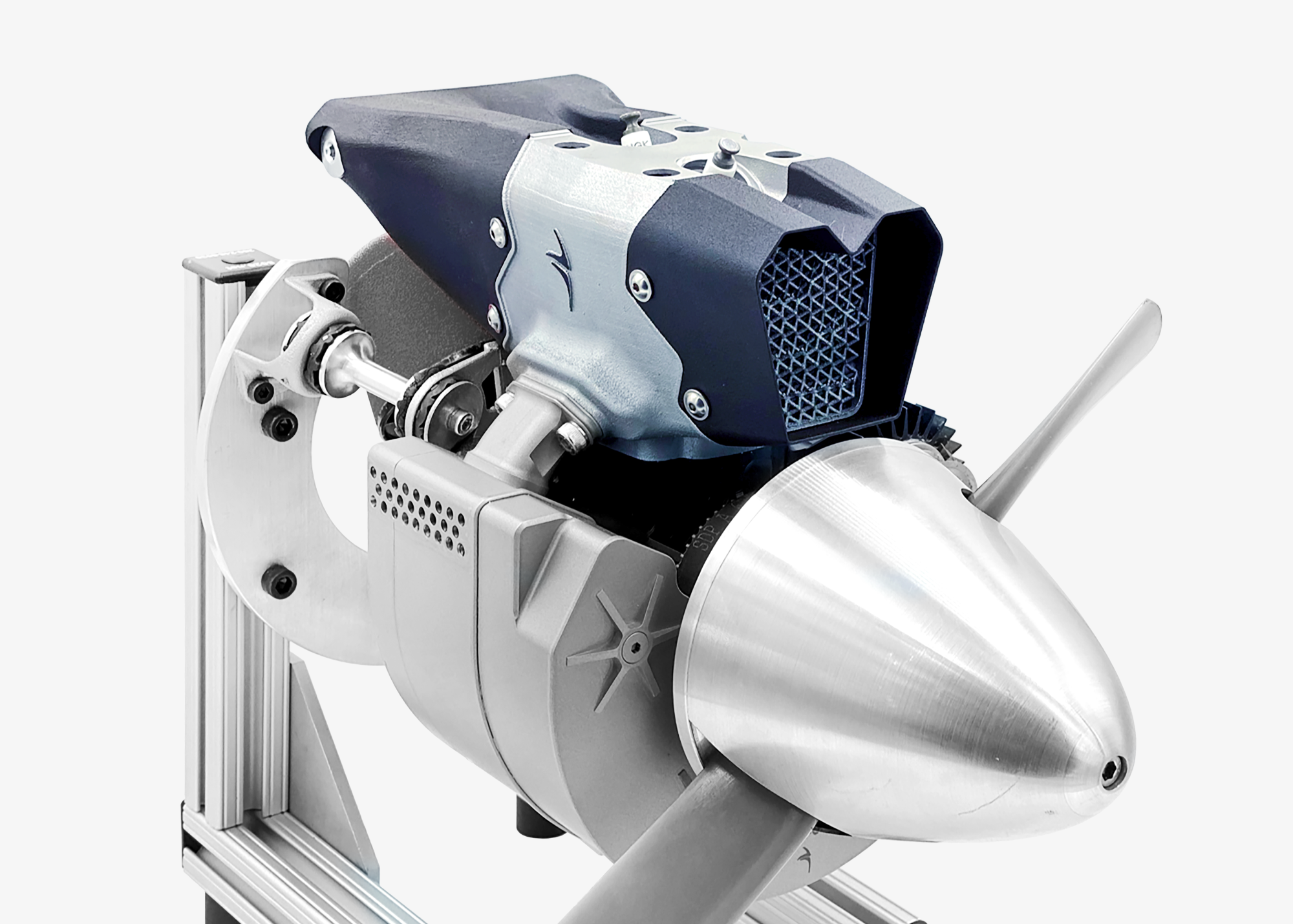
Applications
Key Software Capabilities
- Lattice structures
- Integrations
Summary
Cobra Aero used nTop to redesign the air-cooled cylinder of their unmanned aerial vehicle (UAV) drone engines for additive manufacturing. Using conformal lattice structures, they developed an engine cylinder that is manufacturable in one piece and weighs only 420 grams.

About: Based in Michigan, Cobra Aero is a manufacturer of engines and related components, primarily for Unmanned Aerial Vehicles (UAV) and drones.
- Industry: Aerospace and defense
- Size: 1-25 employees
- Location: Michigan, USA
- Product: Air-cooled cylinder for a UAV drone
The project
Design a lighter, more efficient air-cooled cylinder
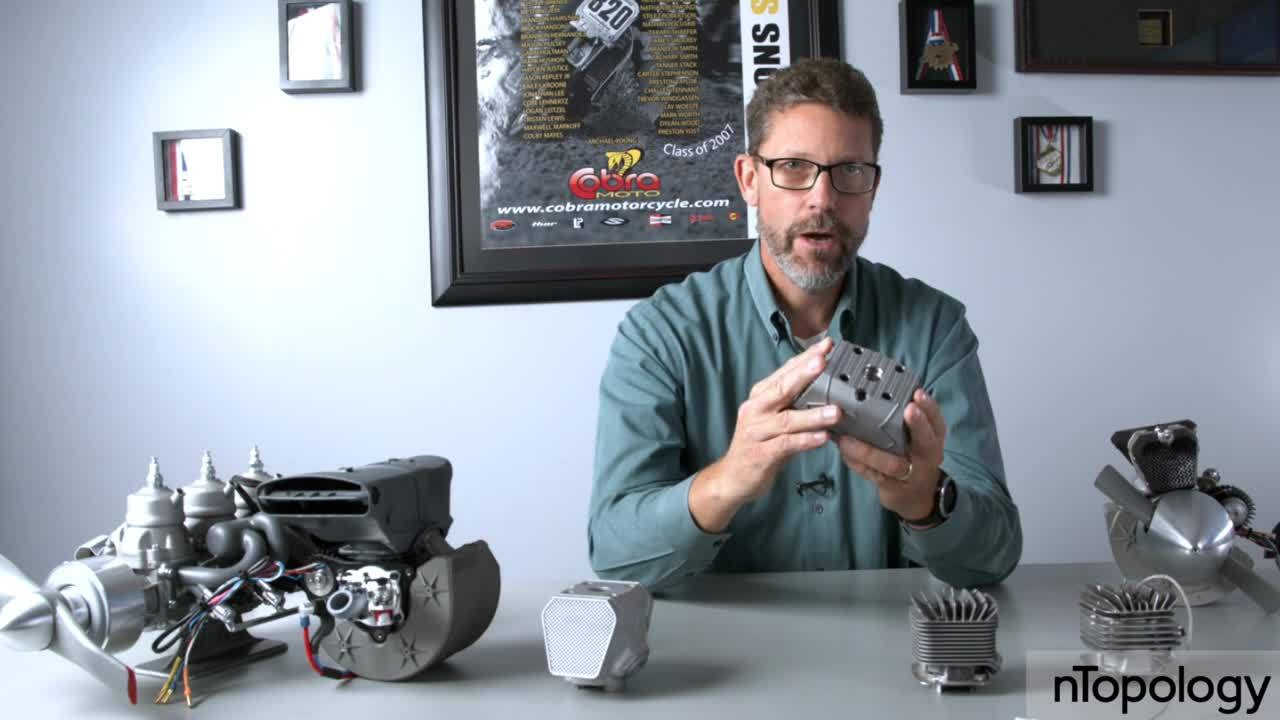
Instead of fins, Cobra Aero opted for a lattice structure as the heat transfer medium.
To stay competitive in their industry, Cobra Aero invested in metal additive manufacturing — a Renishaw Direct Metal Laser Sintering (DMLS) system.
The team aimed to improve thermal properties and reducing waste by making the air-cooled cylinder with AM.
The challenge
Reduce cost and waste of materials

The team knew that redesigning the part for AM would yield many advantages — but they didn’t yet realize how much more they could achieve.
Cobra Aero already had a successful AM-adapted finned cooling system in commercial production. However, the initial design required a lot of manual post-processing to remove the support structures, which consumed as much material as the end part itself.
The solution
Use lattices instead of fins to optimize heat transfer.
Cobra Aero used nTop’s field-driven design capabilities to spatially control the properties of the lattice.
Simply put, they tightened the lattice structure in areas where conduction was more important, while in areas where convection was more important and more airflow was needed to pull the heat away, they loosened the lattice structure.
The results
50%
Less wasted material
1
Component instead of 6 parts
Why nTop?
Lattices in nTop enabled Cobra Aero to lightweight and strengthen their design without using fins. Field-Driven Design made it possible to create conformal cooling channels for better thermal management. Simple file conversion prevented inaccuracies during the file transfer process.
Lattices as an alternative to fins
By hollowing out a solid aircraft bracket and filling the space with a lattice, weight can be decreased and strength improved. As a bonus, lattices are self-supporting — they don’t require any support structures.
Using nTop, Cobra Aero quickly generated different sizes of lattices to find a design that distributes stress more uniformly, reduces concentrations that can lead to delamination, and promotes both manufacturability and durability.
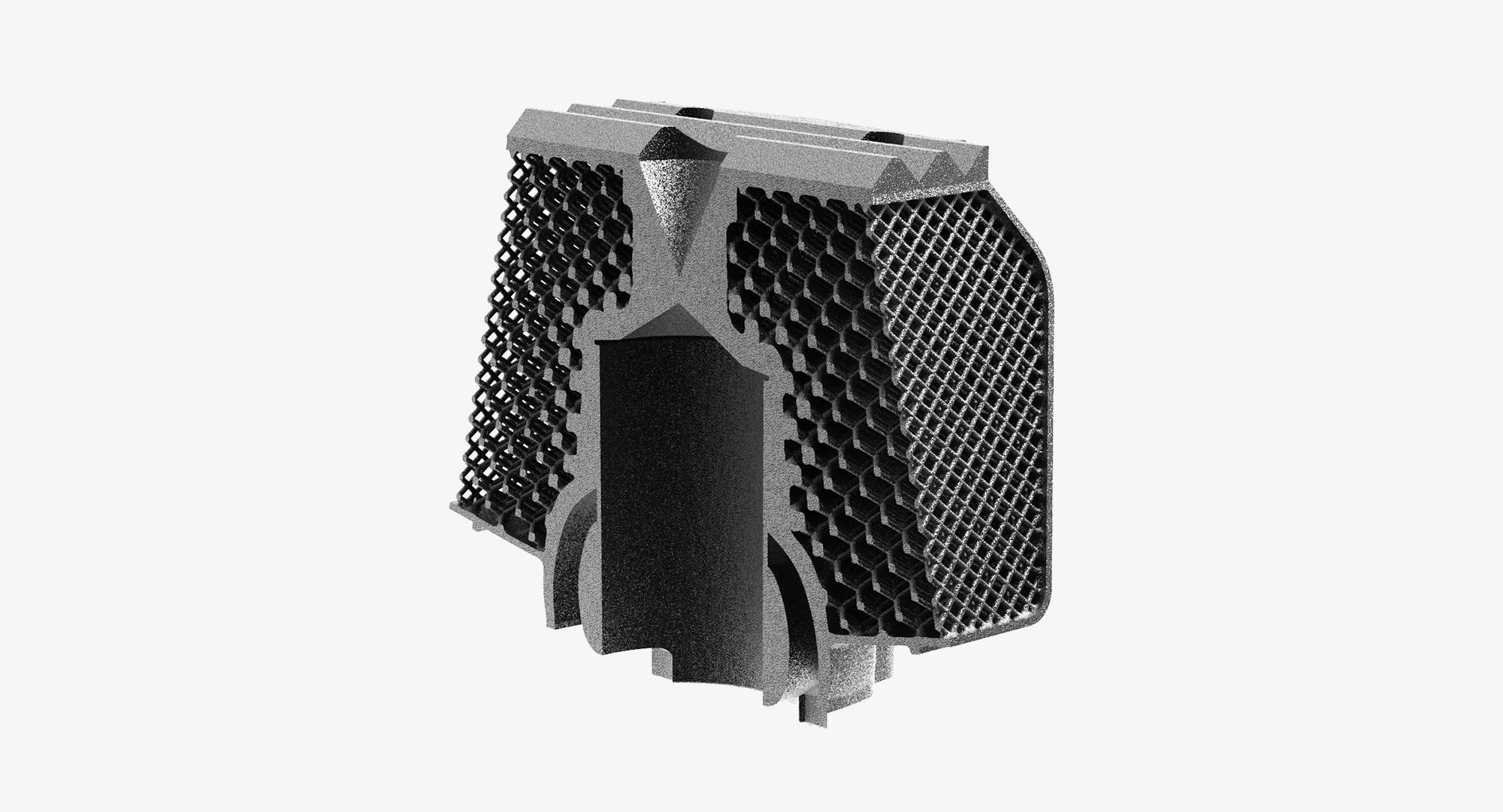
Cross-section of the combustion engine cylinder showing the internal variations of the lattice.
Optimizing for heat transfer
The team needed a way to remove enough heat from the cylinder without adding too much drag to the entire structure.
To do this, Cobra Aero used nTop’s field-driven design capabilities to spatially control the properties of the lattice. They used a range of multiphysics simulations as input — temperature, airflow velocity, pressure drop, and mechanical stresses — to generate a highly optimized structure.
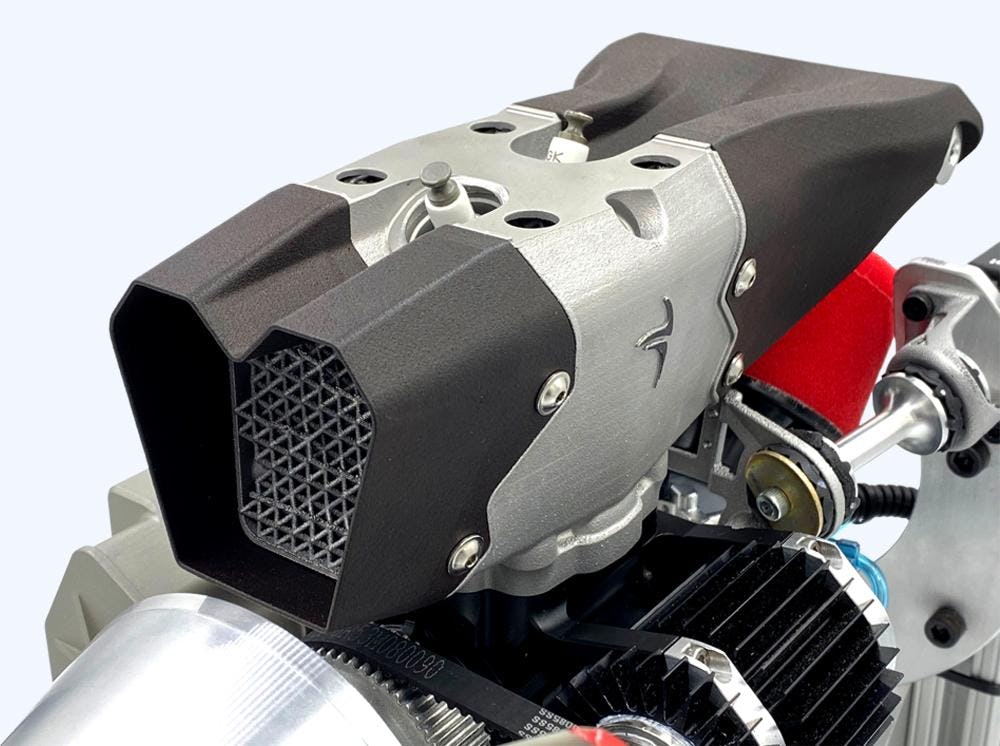
The redesigned microturbine generator housing. It features a conformal cooling channel created using variable shelling and automated smoothening.
Easy-to-use file conversion
When the team finalized their design, they used nTop’s slicing capabilities to export a CLI file that was sent directly to the Renishaw AM500 metal system for manufacturing. This way, they bypassed the need to convert the geometry to the STL format and avoided the inaccuracies that may arise while converting the data.
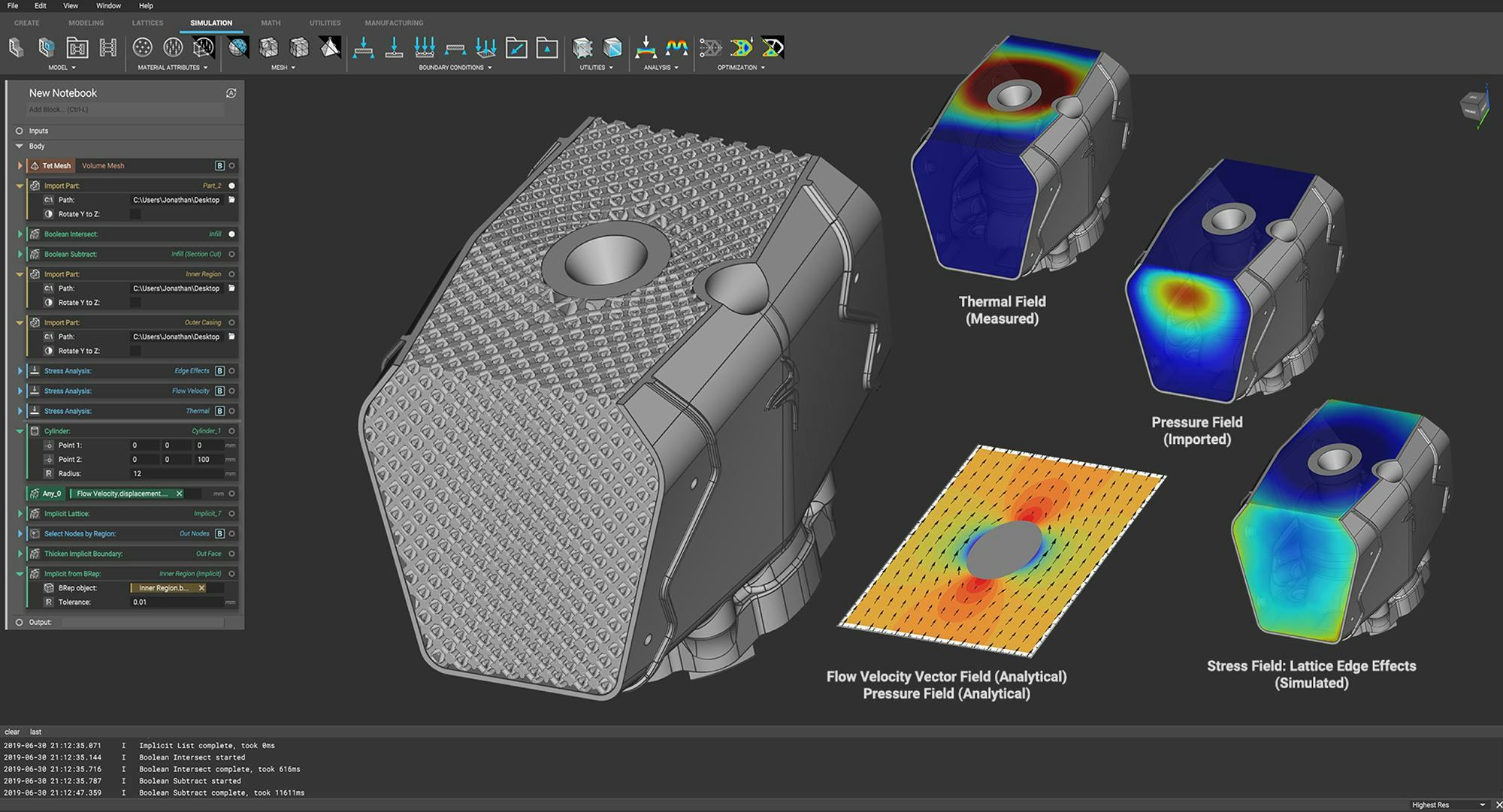
Field-driven design enables you to use simulation results as parameters to control your designs.
Conclusion
Cobra Aero’s lattice cylinder design is currently in commercial production. The redesigned part is lighter and dissipates heat more effectively. With nTop at their disposal, they went on to redesign other key components of their UAV engine, too.
Related content
- VIDEO
nTop 2025 Nvidia GTC Presentation

- VIDEO
When your design changes, how fast can you respond?

- CASE STUDY
Replacing spacecraft supermaterial with high-performance lattice

- VIDEO
Creating a computational design workflow to lightweight drone panels with nTop’s new ribbing tools

- WEBINAR
Accelerating Product Engineering with Computational Design
